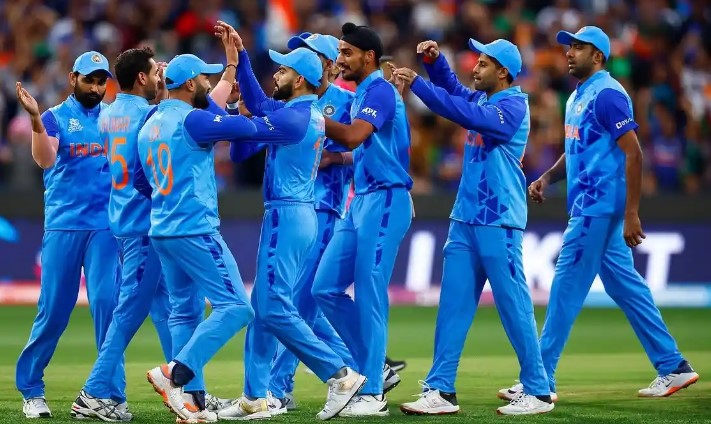Cricket is a game that has evolved from its origins in England to become one of the most popular and widely played sports in the world. While it is most famously associated with countries like India, Australia, England, and Pakistan, the sport has spread far beyond its traditional roots, captivating millions of fans and players across the globe.
So, how many countries actually play cricket? The answer is more complex than it might seem. While only a few nations dominate international cricket, the game is played, to varying degrees, in over 120 countries around the world. Let’s take a closer look at cricket’s global footprint, its reach, and how the sport is played in different regions.
1. Full Members of the International Cricket Council (ICC)
The International Cricket Council (ICC) is the global governing body of cricket, and it recognizes 12 countries as Full Members. These countries are the elite of international cricket, with the infrastructure, talent pools, and cricketing traditions to support all three formats of the game: Tests, One-Day Internationals (ODIs), and T20s.
The 12 Full Members of the ICC:
- India
- Australia
- England
- Pakistan
- South Africa
- New Zealand
- Sri Lanka
- West Indies (comprising several Caribbean nations like the Bahamas, Barbados, Jamaica, etc.)
- Bangladesh
- Zimbabwe
- Afghanistan
- Ireland
These countries regularly compete in ICC tournaments and have established strong cricketing systems. They are the most successful and well-known cricketing nations globally, producing some of the sport’s biggest stars.
2. Associate Members of the ICC
In addition to the Full Members, the ICC also recognizes Associate Members, which are countries where cricket is growing but may not have the same level of infrastructure or tradition as the Full Members. There are currently 94 Associate Members, including nations like:
- Nepal
- Scotland
- UAE
- Netherlands
- Kenya
- Singapore
- Malaysia
- Oman
These countries often compete in regional tournaments and qualifiers for ICC events. While cricket is not the dominant sport in these countries, they have passionate followings and a growing interest in the game. Some, like the Netherlands and Scotland, have produced notable performances on the world stage, qualifying for major ICC tournaments.
3. Cricket in Non-Member Countries
Cricket also has a presence in many countries that are not members of the ICC, meaning they are not yet formally recognized by the governing body but still play the game at some level. There are reports that cricket is played in over 120 countries, but it ranges from casual and amateur levels to semi-professional or club-based competitions. Some of these countries include:
- USA: Cricket has a long history in the U.S., though it is currently overshadowed by other sports like American football, basketball, and baseball. Still, the U.S. has been making strides in promoting the game, with Major League Cricket (MLC) beginning to take off.
- China: Cricket is still in its infancy in China, but the country has taken steps to introduce the sport through school and amateur programs. The 2008 Beijing Olympics saw cricket being played in some form as part of the Olympic legacy, and the national governing body is working on developing grassroots programs.
- Japan: Cricket is played at a grassroots level in Japan, although it’s nowhere near as popular as sports like baseball or football. The Japan national cricket team competes in ICC qualifiers and regional tournaments.
- Germany: Cricket is slowly growing in Germany, particularly in the immigrant communities from cricket-loving nations like India and Pakistan. The German Cricket Federation has helped to organize and promote the sport.
4. Cricketing Hotspots Outside Traditional Nations
Cricket is most popular in South Asia, Australia, the UK, and parts of Africa, but the game is also played in non-traditional cricketing nations. These include countries in the Middle East, Asia-Pacific, and parts of Europe and North America. Let’s look at some regions where cricket is flourishing:
- Middle East: The United Arab Emirates (UAE), home to the Dubai International Cricket Stadium, has become a hub for international cricket. Other countries like Qatar, Kuwait, and Saudi Arabia also have growing cricket communities.
- Europe: While cricket in countries like England and Ireland is well-established, European nations such as Germany, Denmark, and France have seen the sport grow in popularity in recent years, particularly among expatriate communities from cricket-loving nations. The European Cricket League (ECL) and the European T20 Championship have boosted the sport’s profile.
- North America: Canada has a long history with cricket, but in the United States, the sport is still in the developmental stages. The United States of America Cricket Association (USACA) has been working on raising the profile of the sport, and the launch of Major League Cricket (MLC) in 2023 is a significant step forward.
- Caribbean: The West Indies, a region made up of many Caribbean nations like Jamaica, Trinidad and Tobago, and Barbados, is a major cricketing powerhouse. Cricket is deeply ingrained in the culture of these islands, and the West Indies team has been a major force in world cricket for decades.
- Africa: Beyond South Africa, countries like Kenya, Uganda, and Namibia have developed cricketing traditions, with Kenya famously reaching the semi-finals of the 2003 ICC Cricket World Cup.
5. Grassroots and Emerging Cricket Nations
The game of cricket is expanding rapidly, particularly at the grassroots level in countries that previously had little to no cricketing infrastructure. This includes nations like:
- Uganda and Kenya in East Africa, which have a strong following of amateur cricket and have made some progress on the international stage.
- Brazil and Argentina in South America, where cricket is slowly taking root among young players.
- Thailand and Indonesia in Southeast Asia, which have established programs to introduce the game to a new generation.
- Sweden and Norway, where the growing South Asian diaspora has led to a rise in cricket participation.
6. Cricket’s Future Global Expansion
As the game continues to grow, many nations are beginning to invest more in cricket through schools, clubs, and youth programs. The rise of T20 leagues (like the IPL, Big Bash League, and Caribbean Premier League) has also contributed to cricket’s global appeal, making it more accessible to fans and players in countries where cricket wasn’t traditionally popular.
The introduction of The Hundred in England, the Global T20 League in South Africa, and the establishment of Major League Cricket in the USA have further contributed to cricket’s expansion.
Cricket’s status as a global sport is expanding in both professional and amateur forms. The ongoing growth in countries where cricket was once unknown, such as China and the USA, combined with continued investment in countries like Afghanistan, Ireland, and Bangladesh, shows that the future of cricket is incredibly bright.
Conclusion: A Sport Without Borders
While cricket is often associated with traditional powerhouse nations like India, Australia, and England, it’s clear that the game is expanding across the world. With over 120 countries playing cricket at various levels, the sport’s global reach is far greater than many realize. As more nations develop the infrastructure and programs to support cricket, we can expect the game to continue growing and becoming an even more integral part of the global sporting landscape.
Whether played in the bustling streets of India or on a grassy field in the USA, cricket is a game that brings people together, transcending national boundaries and cultures.
Also Read: Which Country is Best in Cricket? A Look at the Top Cricketing Nations













